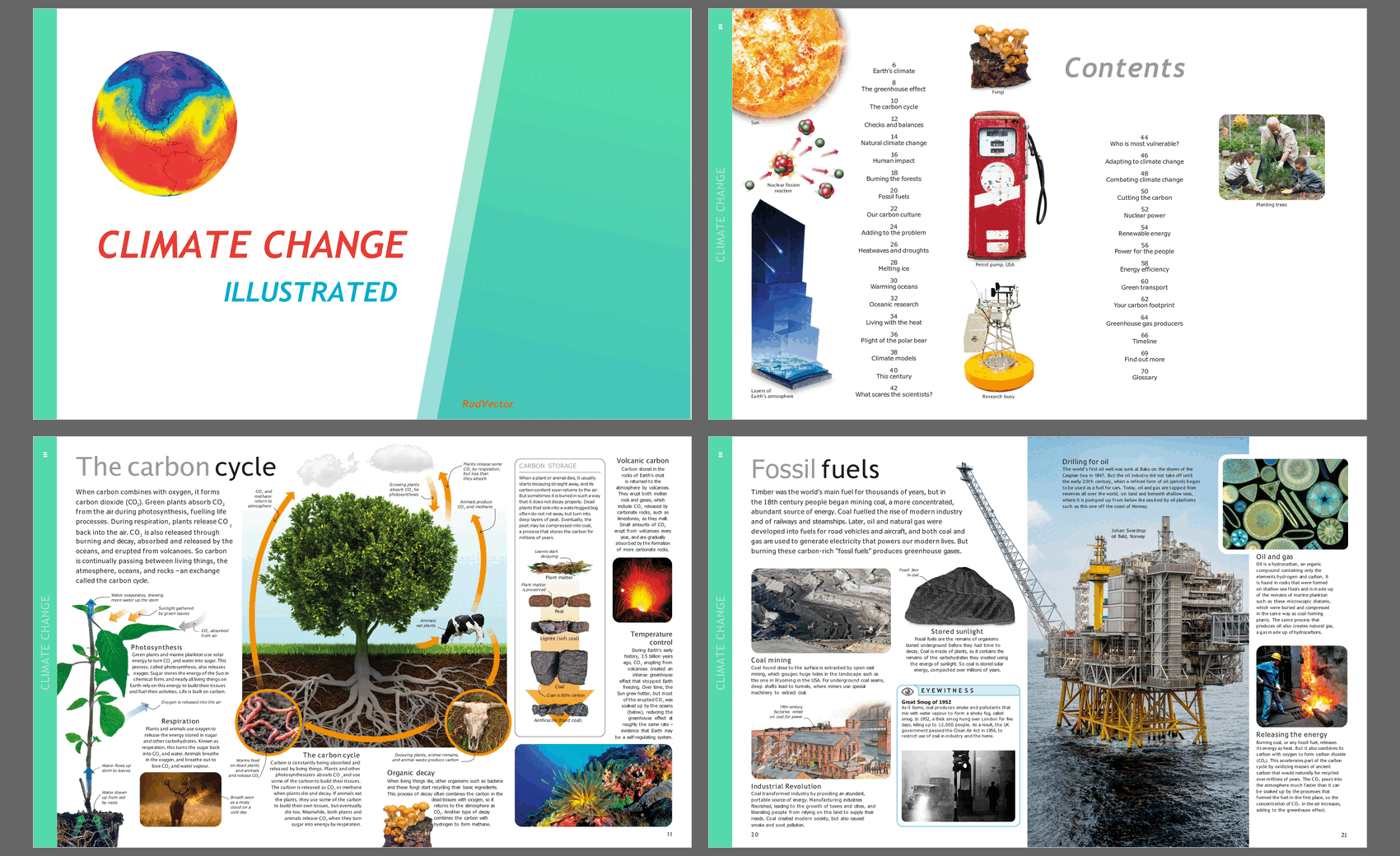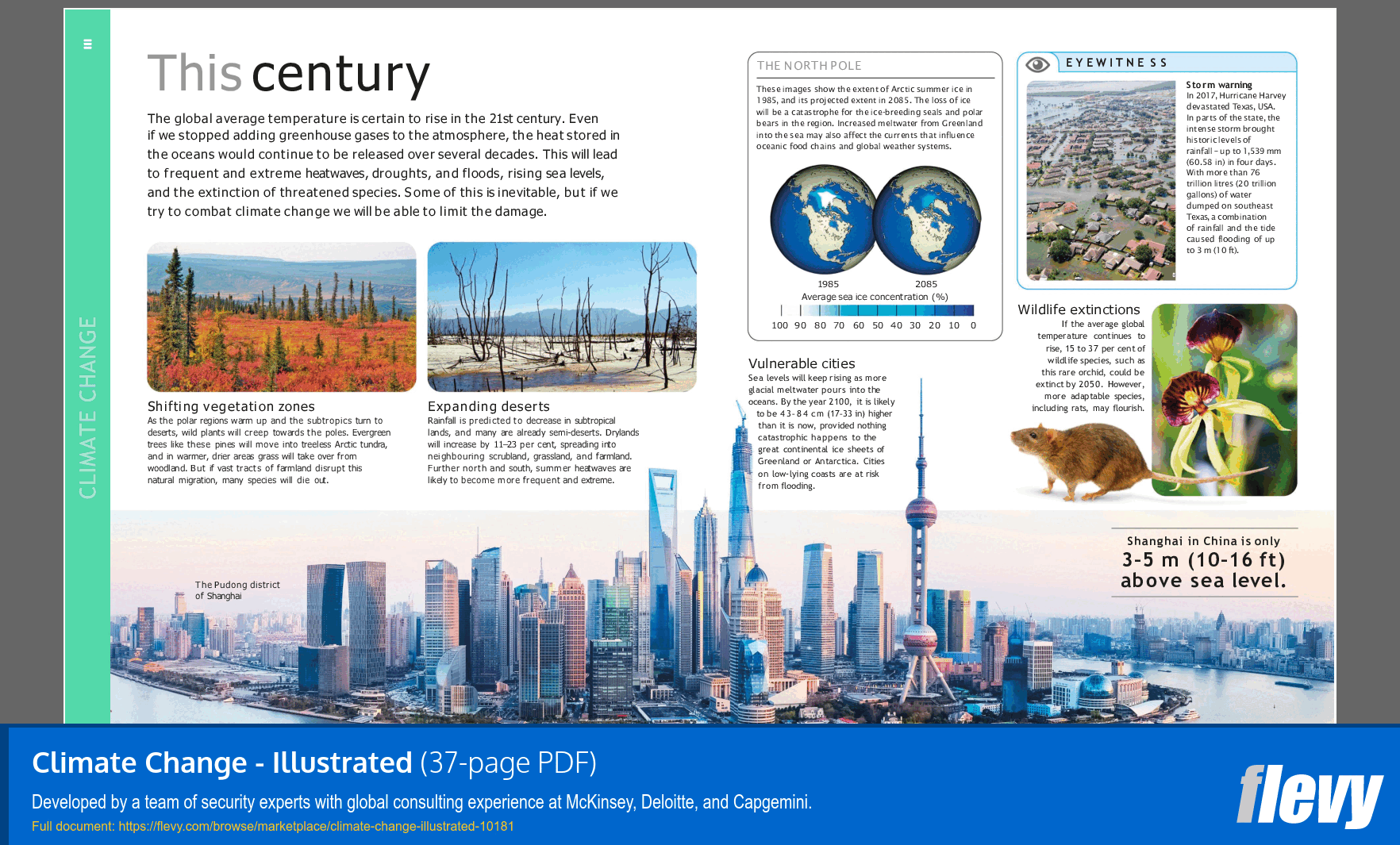Climate Change - Illustrated (PDF)
PDF document 37 Pages
SUSTAINABILITY PDF DESCRIPTION
Climate Change – Illustrated
The Earth's climate is a delicate balance influenced by natural and human factors. The greenhouse effect, while essential for maintaining habitable temperatures, has intensified due to human activities that increase carbon dioxide and other greenhouse gases in the atmosphere. Through the carbon cycle, carbon moves naturally between the air, oceans, soil, and living organisms, but burning fossil fuels and deforestation have disrupted this cycle, leading to global warming. Checks and balances in Earth's systems—such as forests, oceans, and ice caps—once helped regulate the climate, but their ability to do so is now under threat.
Natural climate change has always occurred over geological timescales, yet today's rapid shifts are largely driven by human impact. Burning forests and fossil fuels adds billions of tons of carbon to the atmosphere, fueling our carbon culture and adding to the problem. The consequences are evident: heatwaves and droughts intensify, ice melts at alarming rates, oceans warm and acidify, and polar bears face a diminishing habitat. Scientists use climate models to predict these changes, projecting that this century will bring more extreme weather, rising sea levels, and major disruptions to ecosystems and human societies.
Researchers, using tools like research buoys and satellite data, strive to understand what scares the scientists most – the speed and magnitude of climate feedbacks. Certain regions and populations are more vulnerable, especially those with fewer resources to adapt. Hence, adapting to climate change becomes a global necessity, while combating it requires cutting carbon emissions and transitioning to sustainable energy sources.
Nuclear power and renewable energy – solar, wind, and hydro – play key roles in reducing reliance on fossil fuels. Empowering communities with clean energy ensures that power for the people aligns with environmental goals. Energy efficiency and green transport further contribute to a smaller carbon footprint. Each person and nation can make a difference by reducing greenhouse gas production, monitoring emissions, and supporting climate-friendly policies.
This pdf presentation concludes with a timeline tracing our environmental journey, a guide to finding out more about climate solutions, and a glossary explaining key terms. Together, these chapters illustrate that understanding the science, acknowledging human responsibility, and taking collective action are essential to safeguarding Earth's future.
Got a question about the product? Email us at support@flevy.com or ask the author directly by using the "Ask the Author a Question" form. If you cannot view the preview above this document description, go here to view the large preview instead.
Source: Best Practices in Sustainability PDF: Climate Change - Illustrated PDF (PDF) Document, RadVector Consulting









